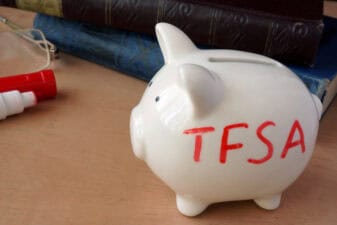Both Canadian airlines reported Q3 earnings last week, and the results paint a pretty different picture between the two commercial carriers.
Which company is the better buy heading into the winter vacation season?
For the third quarter ended September 30, WestJet Airlines (TSX:WJA) reported top-line revenues of $1,261 billion versus $1,215 billion in the third quarter of 2017 for 3.8% year-over-year growth. The problem was, while revenues were higher for the quarter, the company also saw its operating expenses increase by 16.4% from $1,016 billion to $1,183 billion.
The result is that even though revenues were markedly higher on the quarter, it was higher fuel costs that drove down WestJet’s operating margin by more than 10% from 16.3% in Q3 2017 to 6.2% in Q3 2018.
It didn’t exactly help either that WestJet had difficulty filling the additional capacity it had added in the quarter. The airline added 9.9% in available seat miles, yet revenue per seat mile declined year over year, as it would appear WestJet needed to discount at least some of its flights in order to get more passengers on board.
WestJet’s Q3 revenue per seat mile declined to $14.20 from $15.04 a year ago.
Meanwhile, larger rival Air Canada (TSX:AC)(TSX:AC.B) faced a similar fate; however, it fared slightly better in Q3. Air Canada had increased its seating capacity in the third quarter, increasing available seat miles by 6.7% compared to WestJet’s 9.9%.
That more conservative strategy appeared to pay dividends as, unlike WestJet, Air Canada saw its revenue per passenger mile increase from $17.10 to $17.60 in the quarter.
Air Canada’s increased revenue per passenger seat mile helped to somewhat mitigate its higher fuel costs with the result being a 5% drop in its reported operating margin (from 20% to 15%) compared to WestJet’s 10% drop.
Bottom line
Higher fuels costs will certainly be a factor that investors will want to continue to monitor in future quarters.
Airlines worldwide have been one of the primary beneficiaries of lower energy prices that have persisted since mid-2014. However, the price of WTI oil has risen from a 10-year low of under US$30 to a 52-week high of more than US$75 over the past two years.
While WTI has fallen over the past couple of months and now trades at a little more than US$60, the days of US$30 are in all likelihood a thing of the past. I mean, “never say never,” but it definitely wouldn’t be a scenario I’d bet on.
And while several airlines had been clever to lock in lower fuel prices by buying forward contracts while prices were depressed, many of those forward contracts are now rolling off the books, leaving airliners without much place to hide.
But all said, the most telling thing between the two companies’ Q3 earnings reports was the discrepancy in their respective “load factors,” which is intended to measure an airline’s efficiency with respect to how it generates revenue to cover its fixed costs.
In the third quarter, Air Canada saw its load factor increase from 85.3% to 85.9%, while WestJet’s declined from 85.7% to 84.6%.
WestJet still has the superior load factor as far as the first nine months of 2018 go, but the latest quarter could be a signaling that the momentum may beginning to turn in Air Canada’s favour.
Fool on.
 Don't Miss AI's Third Wave
Don't Miss AI's Third Wave







